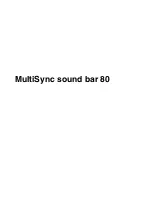
Introduction
Page 2
About Users
A user is a person who is able to enter an access code at a keypad to
perform an action such as to:
Set or unset the system.
Acknowledge and stop alarms.
Raise duress alarms.
Gain access to the user menu to carry out tasks such as to omit
zones, view the log, test the system and switch outputs on or off. For a
full list of available user options, please refer to the
User Menu Map
on
When the system is new, there is only one user: the default master user,
who has full access to perform any action that a user is able to do and
access all user options. The master user can add new users, and while
doing so, specify the user's
type
, which determines the actions the user can
carry out. The user types are described in the next section.
User types
Note:
Some user types are available only if the system is configured as a
partitioned (not part-setting) system. Please refer to page 5 for a
description of part-setting and partitioned modes.
The available user types are as follows:
Master user
– This user is able to carry out all user actions. A master
user can, for example, set or unset the system and access all options
in the user menus, including the ability to add or delete other users.
A master user can edit any user's name, and for all but other master
users, edit a user's type and partitions (if applicable).
In a partitioned system, all master users always belong to all partitions.
There is always (at least) one master user (User 001), which cannot
be deleted by any user.
Admin
(partitioned system only)
– This user is similar to a master
user, but is limited to one or more partitions.
Admin users can set or unset the system and have access to most
options in the user menu (see
User Menu Map
on page 28). They can
add, delete or edit other users (including admin users) belonging to the
same partition(s), but cannot add, edit or delete master users. Admin







































